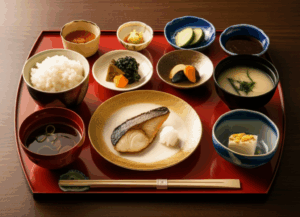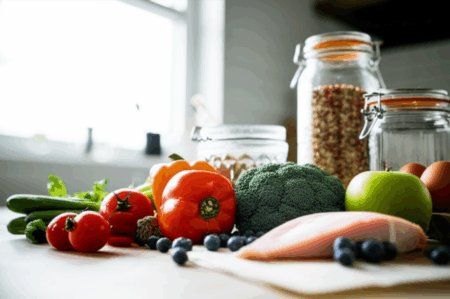In the pursuit of health and fitness, many individuals meticulously track their protein intake, often reaching for foods marketed as “diet-friendly” or “high-protein.” However, a closer look reveals that some of these seemingly virtuous choices can secretly sabotage your progress, packing in hidden sugars, unhealthy fats, or excessive processing that undermine their supposed benefits. Fitness coaches increasingly caution against blindly trusting such products, emphasizing that balance, moderation, and understanding ingredients are far more critical than simply increasing protein quantity.
It’s crucial to understand that while protein is a vital macronutrient for muscle repair, satiety, and overall bodily function, its source and accompanying ingredients significantly impact its benefit. Eating “healthy” often requires discerning between genuinely nutritious options and those that merely wear a health halo.

The Hidden Dangers in Common “Healthy” Foods
Many foods often perceived as healthy can be detrimental due to their processing, added sugars, unhealthy fats, or lack of essential nutrients. Here are six common diet foods a fitness coach might warn you about:
1. Flavored and Low-Fat Yogurts
Yogurt is widely praised for its protein and probiotic content. However, flavored and “low-fat” varieties often mask a significant amount of added sugars. When fat is removed to make a product “low-fat,” manufacturers frequently add sugar to compensate for the loss of taste and texture. A single cup of low-fat fruit yogurt can contain more sugar than a glazed doughnut, sometimes exceeding 45 grams of sugar per serving. This excessive sugar intake can lead to insulin resistance, weight gain, and inflammatory issues, counteracting any health benefits from the yogurt itself.
- Why it can derail goals: High added sugar content, which can lead to increased calorie intake, blood sugar spikes, and cravings.
- Smarter Swap: Opt for plain Greek yogurt, which is higher in protein and significantly lower in sugar. You can add your own fresh fruit or a touch of natural sweetener like a tiny bit of honey or stevia for flavor.
2. Many Protein Bars
Protein bars are a convenient snack, especially for those on the go. Yet, many commercially available protein bars are little more than glorified candy bars, laden with highly processed protein isolates, sugar, artificial sweeteners, and high glycemic carbohydrates. Some can have as much sugar as a chocolate bar, and their “healthy” label can lead to overconsumption. Ingredients like high-fructose corn syrup, agave syrup (despite its “natural” label), and sugar alcohols are common, with sugar alcohols potentially causing digestive issues in some individuals.
- Why it can derail goals: Hidden sugars, unhealthy fats, artificial ingredients, and lack of whole food nutrients.
- Smarter Swap: Choose bars with a short ingredient list featuring whole foods like nuts, seeds, and dried fruit, and natural protein sources. Ideally, make your own protein snacks or opt for whole food protein sources like hard-boiled eggs, nuts, or lean meats.
3. Diet Sodas and “Zero-Calorie” Drinks
Marketed as guilt-free alternatives, diet sodas and other “zero-calorie” drinks sweetened with artificial sweeteners can pose several risks to health goals. While they contain no calories, research suggests artificial sweeteners can confuse the body’s metabolism, potentially increasing cravings for sweets and high-calorie foods. Studies have linked regular consumption of artificial sweeteners to disruptions in gut health, increased risk of metabolic syndrome, type 2 diabetes, cardiovascular complications, and even weight gain.
- Why it can derail goals: May trigger sugar cravings, disrupt gut microbiome, and have been associated with increased risk of metabolic issues and weight gain.
- Smarter Swap: Plain water, sparkling water with a squeeze of fresh citrus, or unsweetened herbal teas are healthier choices for hydration.
4. Rice Cakes
Often seen as a light, low-calorie snack for weight loss, plain rice cakes offer minimal nutritional value beyond carbohydrates. They are typically low in protein, fiber, and essential nutrients. Many varieties, especially flavored ones, can also contain added sugars, sodium, and unhealthy fats. Plain rice cakes have a high glycemic index, meaning they can cause a rapid spike in blood sugar levels, which can lead to subsequent energy crashes and increased hunger, making it harder to manage weight.
- Why it can derail goals: High glycemic index, low in fiber and protein, and can contain hidden sugars and sodium, leading to poor satiety and blood sugar fluctuations.
- Smarter Swap: Pair plain brown rice cakes with a source of protein and healthy fats, such as nut butter, avocado, or hummus, to improve satiety and stabilize blood sugar. Even better, opt for whole-grain crackers with nutrient-dense toppings.
5. Processed Plant-Based Meat Alternatives
With the rise of plant-based diets, “vegan meats” have become popular. While whole plant foods like beans, lentils, and tofu are excellent protein sources, many highly processed plant-based meat alternatives can be problematic. These products are often engineered to mimic the taste and texture of meat, which can involve a long list of ingredients, including protein isolates (like soy or pea protein), additives, fillers, artificial flavors, high levels of sodium, and unhealthy oils. Some may lack a complete amino acid profile and certain micronutrients found in whole foods.
- Why it can derail goals: Often high in sodium, unhealthy fats, and processed ingredients; may lack a full nutrient profile; can be expensive.
- Smarter Swap: Focus on whole, unprocessed plant-based proteins such as legumes (beans, lentils, chickpeas), tempeh, tofu, edamame, and whole grains.
6. Agave Nectar
Often touted as a “natural” and “healthy” sugar alternative with a low glycemic index, agave nectar can be misleading. While it does have a lower glycemic index than table sugar because it’s high in fructose, this doesn’t automatically make it healthier. Fructose is metabolized primarily in the liver, and excessive consumption can contribute to insulin resistance, fatty liver disease, increased triglycerides, and a higher risk of type 2 diabetes and heart disease. Agave nectar also tends to be higher in calories than white sugar per teaspoon.
- Why it can derail goals: High fructose content can negatively impact liver health and insulin sensitivity, potentially leading to metabolic issues.
- Smarter Swap: Use natural sweeteners sparingly. Consider small amounts of raw honey or pure maple syrup, which offer some nutrients, or zero-calorie plant-based sweeteners like stevia or monk fruit. The best approach is to reduce overall intake of added sweeteners.

The Bottom Line: Read Your Labels
Navigating the world of “healthy” diet foods requires vigilance. Many products are expertly marketed to appear beneficial while secretly containing ingredients that can hinder weight loss and overall health. A fitness coach’s advice often boils down to this: prioritize whole, unprocessed foods. Always read nutritional labels carefully, paying close attention to added sugars (which can go by many names like dextrose, maltodextrin, corn syrup, fruit concentrate), sodium, and the quality of protein and fats. Choosing fresh vegetables, lean proteins, whole grains, and healthy fats will consistently serve your health goals better than relying on pre-packaged, “diet” alternatives.






